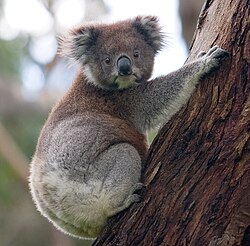| Part of a series on |
| Wildlife of Australia |
|---|
 |


A total of 386 species of mammals have been recorded in Australia and surrounding continental waters: 364 indigenous and 22 introduced. [1] The list includes 2 monotremes, 154 marsupials, 83 bats, 69 rodents (5 introduced), 10 pinnipeds, 3 terrestrial carnivorans (2 recent introductions, and 1 prehistoric introduction), 13 introduced ungulates, 2 introduced lagomorphs, 44 cetaceans and 1 sirenian. The taxonomy and nomenclature used here generally follows Van Dyck and Strahan. [2]